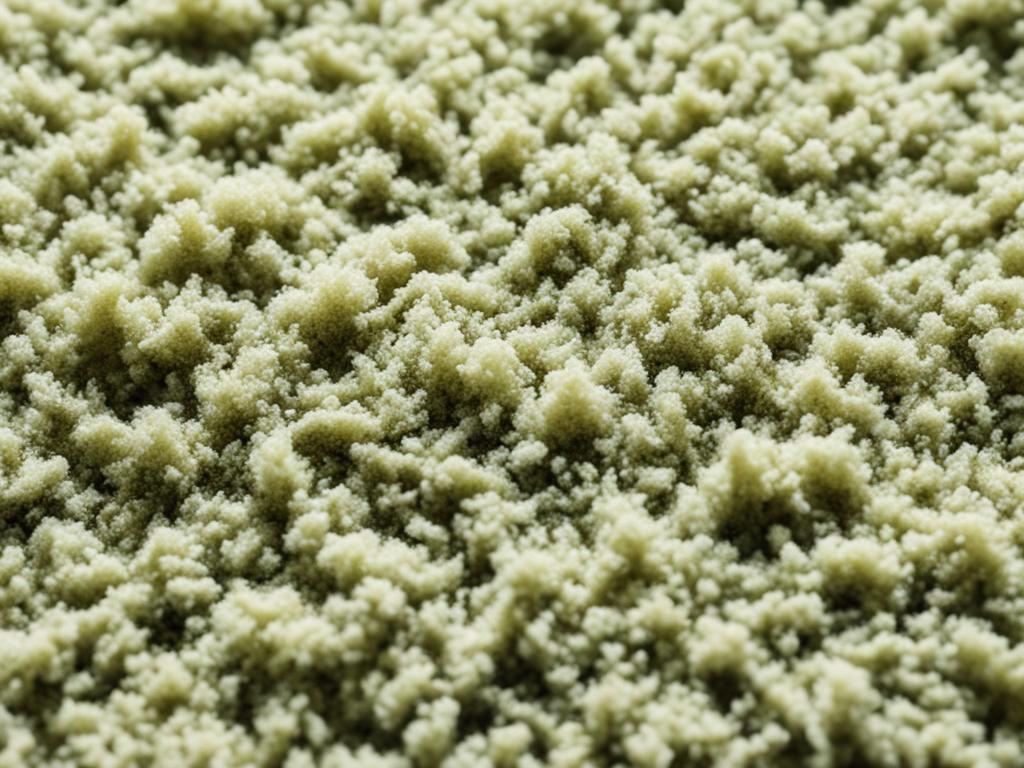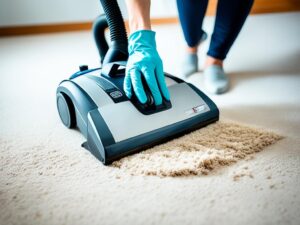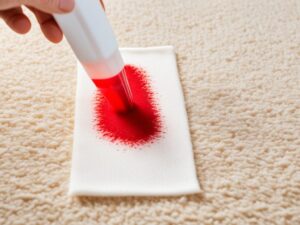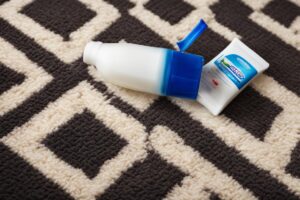If you’ve noticed a strong odor resembling pee coming from your carpet, you’re not alone. It can be quite unsettling to have your living space permeated with such an unpleasant smell. But fear not, there are solutions to this common problem.
There are a few possible reasons why your carpet may smell like pee, and it’s important to understand them in order to effectively eliminate the odor. One reason could be that the carpet already had urine in it before you shampooed it, and the hot water used during the cleaning process reactivated the odor-causing bacteria and urea. Another reason is that urine can seep into the carpet pad, which may not be adequately addressed by surface cleaning methods like shampooing.
To tackle the issue, it’s essential to use proper techniques and products that can fully rinse and extract the urine from both the carpet and the pad. In this article, we’ll explore various tips and methods for removing urine smells from carpets, as well as addressing other common carpet odors.
Key Takeaways:
- Carpet odor resembling pee can have various causes, such as urine residue or contamination in the carpet pad.
- Surface cleaning methods like shampooing may not effectively remove urine smells if the carpet pad is affected.
- Proper techniques and products, such as hot water extraction, can help fully rinse and extract urine from both the carpet and the pad.
- Identifying urine spots with a black light or by pulling back the carpet can help assess the extent of contamination.
- Using steam cleaners and addressing specific odors can aid in the overall removal of unpleasant smells from carpets.
Why Did the Odor Increase After Cleaning?
After shampooing or cleaning your carpet, you may notice that the odor actually becomes more pronounced. This can be a puzzling and frustrating experience. But fear not, there’s a scientific explanation for this phenomenon.
When you clean your carpet with hot water, the heat reactivates the bacteria and urea present in the urine. This reactivation process intensifies the odor, making it more noticeable than before. So, in essence, the cleaning process brings the lingering smell back to life.
It’s important to understand that the odor may have been there before you cleaned the carpet, but it went unnoticed. However, once you introduced hot water, it awakened the dormant scent, surprising you with its strength.
Another factor that contributes to the reemergence of odor after cleaning is that most carpet cleaning methods, including shampooing, primarily clean the surface of the carpet. They often fail to address the urine that has seeped into the carpet pad beneath.
To truly eliminate urine odor, both the carpet and the carpet pad need to be thoroughly treated. Otherwise, the smell will persist, no matter how clean the surface appears.
To fully remove urine odor, it’s essential to use effective methods and solutions that can penetrate deep into the carpet fibers, reach the underlying pad, and completely eliminate both the urine and its accompanying smell.
Quote:
“Cleaning your carpet can initially make the odor worse, but don’t panic. It’s just a temporary setback on your journey to a fresh-smelling home.”
- Hot water reactivates the bacteria and urea in the urine, intensifying the smell
- Most carpet cleaning methods only clean the surface and neglect the urine in the carpet pad
- Thoroughly treating both the carpet and carpet pad is crucial for effective odor removal

Now that you understand why the odor can increase after cleaning, let’s explore how to identify urine spots in your carpet in the next section.
How to Identify Urine Spots
To effectively address urine odor in your carpet, it’s crucial to first identify the urine spots. Here are two methods you can use:
1. Black Light Detection
Black light detection is a useful technique for finding urine spots that may not be visible to the naked eye. By shining a powerful black light on the carpet, the urine stains will become visible as they light up under the UV light. This method is especially effective when performed at night or in reduced lighting conditions.
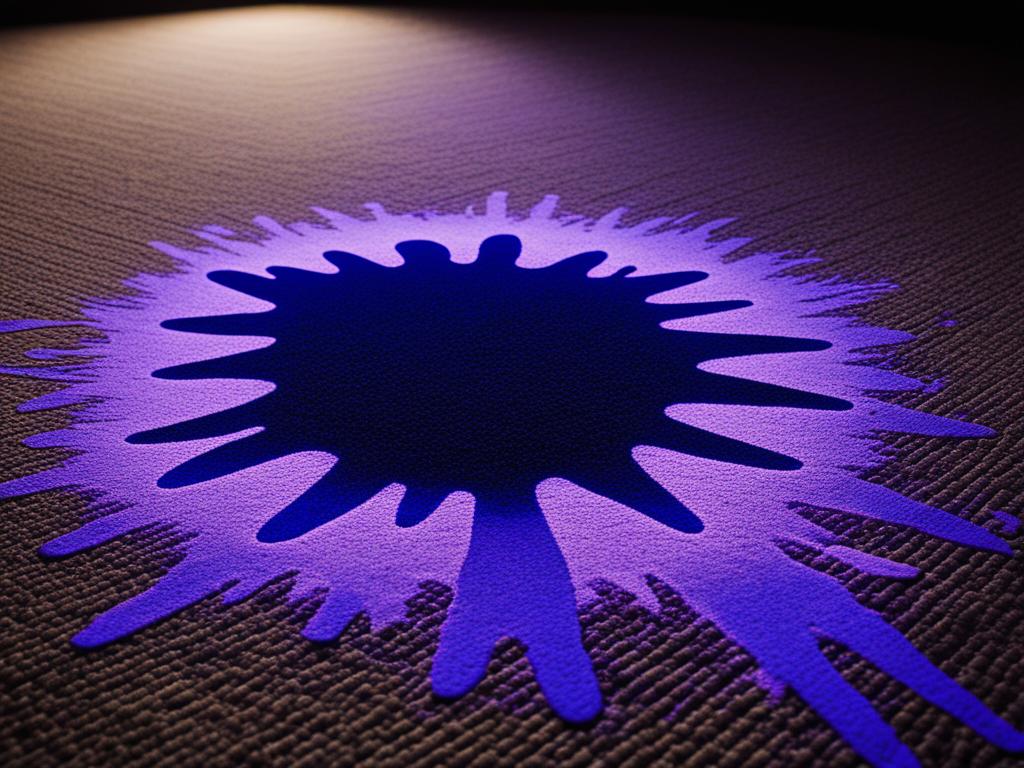
2. Pulling Back the Carpet
An alternative method to identify urine spots is by physically inspecting the carpet and pulling it back. Carefully lift the carpet in areas where pet accidents may have occurred, such as near corners or along walls. By examining the carpet and underlying pad, you can assess the severity of the urine contamination and determine the appropriate treatment plan.
Using a combination of both techniques can provide a comprehensive understanding of the urine spots and guide you in effectively treating the odor problem.
Treating Urine Odor
To effectively treat urine odor in carpets, the hot water extraction method using a professional truck-mounted carpet cleaning machine is often the best approach. This powerful technique, coupled with the right solutions, can fully rinse and extract the urine from both the carpet and the pad.
For basic pet odor treatment, a topical solution applied over the affected area, followed by hot water extraction, may be sufficient. This process helps remove surface odor-causing bacteria and contaminants. However, in more severe cases where the urine saturation is high, additional steps may be necessary.
- Flooding the affected area: In severe cases, flooding the affected area with a specialized solution and using a flood extractor can help eliminate deep-seated urine odor.
- Carpet pad replacement: In extreme cases where the urine has penetrated deeply into the carpet pad, it may be necessary to replace the pad to completely remove the odor. Thoroughly cleaning both sides of the carpet is essential in these situations.
It’s crucial to hire a professional carpet cleaner who is experienced in treating pet urine issues for the most effective results. They will have the expertise and equipment necessary to properly assess the extent of the odor problem and provide appropriate treatment.
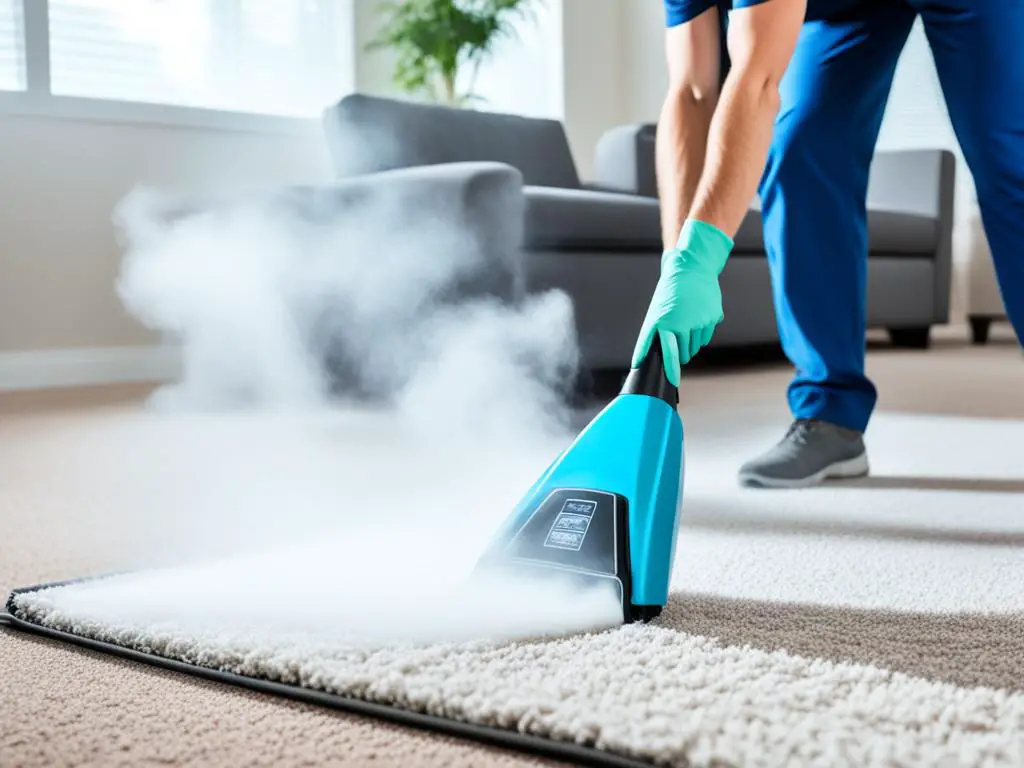
Image: Hot water extraction is an effective method for treating urine odor in carpets.
Common Reasons for Carpet Odor
Even after cleaning your carpet, you may still encounter unpleasant odors. There are several common reasons why this happens:
- Improper Carpet Cleaning: When bacteria and contaminants in the carpet are not effectively removed, lingering odors can persist. It’s crucial to use proper cleaning techniques and products to ensure thorough cleanliness.
- Carpet Cleaner Smell: Sometimes, the foul odor you smell may actually be coming from the carpet cleaner itself. Some cleaners can emit unpleasant odors during use, which can transfer to your carpet.
- Over-Wetting Carpet: Over-wetting the carpet during the cleaning process can result in a damp, musty smell. It’s important to be mindful of the amount of water used and ensure proper drying to prevent this issue.
Proper cleaning techniques and equipment utilization are essential to prevent these common causes of carpet odor. By addressing these factors, you can enjoy a fresh-smelling carpet in your home.
Addressing Specific Odors
Different odors in carpets may require specific treatments. Here are some effective solutions for addressing common carpet odors:
Dog Urine Smell:
When dealing with dog urine smells, it’s important to use an enzyme-based pet odor neutralizer. This type of product breaks down the urine molecules, effectively eliminating the odor. Multiple applications may be needed for stubborn smells. Ensure thorough saturation of the affected area, allowing the product to penetrate deeply and neutralize the odor.
Cat Urine Smell:
Removing cat urine odors can be more challenging compared to dog urine. If the smell persists after using pet odor neutralizers, professional help may be required. Professional carpet cleaners have specialized treatments and equipment to effectively eliminate cat urine smells and ensure a fresh-smelling carpet.
Mold Odor:
If your carpet smells like mold or mildew, it’s crucial to address the underlying issue. Mold growth is often a sign of excessive moisture or water damage. Consider contacting a professional mold remediation service to assess and resolve the mold issue. Once the source of the odor is eliminated, thorough cleaning and drying of the carpet can help eliminate any residual mold smell.
Damp Carpet Smell:
A damp carpet smell can occur if the carpet was over-wet during cleaning or if it did not dry properly. Proper ventilation is crucial to promote drying and eliminate the odor. Open windows, use fans, or run a dehumidifier in the room to facilitate air circulation. If the smell persists, professional carpet drying services may be required to ensure complete moisture removal.
Foot Odor After Shampooing:
Sometimes, shampooing a carpet can leave behind a lingering foot odor. To address this issue, ensure proper ventilation during and after the cleaning process. Open windows and use fans to promote air circulation and help the carpet dry thoroughly. Regular vacuuming and keeping the carpet clean can also prevent foot odor from becoming a recurring issue.
Remember to always follow the manufacturer’s instructions and guidelines when using any odor removal products or DIY remedies. Test any cleaning solutions on a small, inconspicuous area of the carpet first to ensure it does not cause discoloration or damage.
By understanding and addressing the specific causes of different odors, you can effectively eliminate unpleasant smells from your carpets and enjoy a fresh and clean living environment.
Steam Cleaners for Odor Removal
A steam cleaner can be a valuable investment when it comes to maintaining the cleanliness and freshness of your carpets and upholstery. Not only does steam cleaning offer several benefits, but it also provides an efficient solution for removing bad smells and eliminating biological stains.
One of the significant advantages of using a steam cleaner is that it eliminates the need for harsh chemicals in many cases. The high temperature of the steam effectively breaks down and removes dirt, grime, and odor-causing bacteria, without relying on chemical agents. This not only makes steam cleaning environmentally friendly but also ensures that no chemical residue is left behind.
When it comes to bad smells, steam cleaning is particularly effective. The heat generated by the steam penetrates deep into the fibers of your carpets and upholstery, effectively removing odors caused by pet accidents, spills, or general wear and tear. By targeting the source of the odor, steam cleaners can provide long-lasting freshness and eliminate the need for masking agents or temporary solutions.
Moreover, steam cleaning not only removes bad smells but also disinfects and cleans your carpets and upholstery. The high temperature of the steam kills bacteria and allergens, providing a healthier and cleaner environment for you and your family.
Additionally, steam cleaners are highly effective in removing biological stains. Whether you’re dealing with urine stains from pets or mold and mildew growth, steam cleaning can help break down and remove these stubborn stains. The intense heat of the steam helps to loosen the stain particles, making them easier to extract, resulting in a cleaner and fresher surface.
Investing in a steam cleaner can save you money in the long run. Instead of relying on professional carpet cleaning services or purchasing expensive cleaning products, a steam cleaner provides a cost-effective solution that allows you to clean and refresh your carpets and upholstery whenever needed.
Overall, a steam cleaner is a powerful tool for odor removal and maintaining the cleanliness of your carpets and upholstery. With its ability to eliminate the need for chemicals, effectively remove bad smells, disinfect and clean, and remove biological stains, a steam cleaner is a must-have for any homeowner.
Comparing Steam Cleaning with Traditional Cleaning Methods
| Factors | Steam Cleaning | Traditional Cleaning Methods |
|---|---|---|
| Chemical Usage | No or minimal use of chemicals | Relies on chemical cleaning agents |
| Odor Removal | Effectively removes bad smells | May mask or temporarily cover up odors |
| Disinfection | Kills bacteria and allergens | May not effectively kill bacteria and allergens |
| Stain Removal | Removes biological stains effectively | May require additional products and methods |
| Cost | Cost-effective in the long run | May require professional services or expensive cleaning products |
Conclusion
If your carpet has an unpleasant odor, it is crucial to identify the root cause and address it correctly. Improper carpet cleaning methods, over-wetting, and urine contamination in the carpet pad can all contribute to persistent odors. By utilizing appropriate techniques like hot water extraction and using the right cleaning products, you can effectively eliminate pet urine smells and other unpleasant odors from your carpets. In some instances, seeking professional assistance may be necessary to achieve the best possible results. Additionally, regular maintenance, including steam cleaning, can help prevent and eliminate odors, ensuring your carpets remain fresh and odor-free.
